Samsung HW-Q950T


The Samsung HW-Q950T is the Korean company’s premium soundbar for 2020, a 9.1.4 surround system with support for Dolby Atmos and DTS:X sound.
At £1599, the HW-Q950T isn’t exactly cheap (though at the time of review it’s dropped to £1299). However, it aims to offer true object-based surround sound with its rear speakers, in a manner in which a soundbar/subwoofer combo isn’t capable of.
Related: Best soundbar
Samsung HW-Q950T design – You’re going to need a bigger table/AV stand
Hoisting the main unit out of its packaging, the Samsung HW-Q950T is a sizeable bar in every dimension. At 1232 x 138 x 69.5mm (WDH), it’s about the width of a 55-inch TV – and placement beneath a TV should be fine as long as there’s around 70mm of clearance.
Tipping the scales at 7.1kg for the main unit, it’s reassuringly heavy. And if it doesn’t already spill over, you’ll want to clear some space or have a table/stand big enough to accommodate it. The main bar can be wall-mounted (as well as the satellite speakers), and in the packaging are the mounts and screws you’ll need to do just that, plus a guide for heaving the soundbar onto a wall. Since this is a wireless system you won’t be adding a clutter of cables to your room – but, ideally, you’ll need to have a medium to large-sized room to take advantage of its skills.
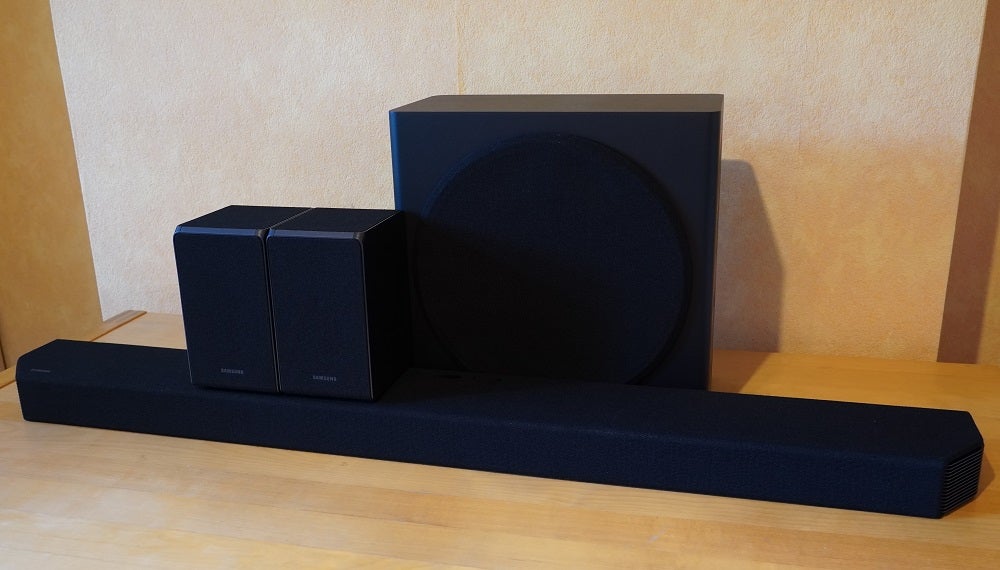
Despite its size, the Samsung Q950T isn’t an industrial slab of design. Aesthetically, it’s quite the looker, taking cues from Samsung’s lifestyle soundbars such as the HW-S60T. It comes covered in Kvadrat fabric – as seen on the S60T – and the chamfered edges add elegance to the unit, with the side-firing speakers placed behind a grille cementing the soundbar’s premium design and look.
Like the S60T, the side-firing speakers will warrant needing to clear some space out towards the edges. Other similarities to the S60T include the display – the Q950T has two. But it’s here where the soundbar makes a rather baffling design faux pas.
Related: Every Samsung 2020 TV explained
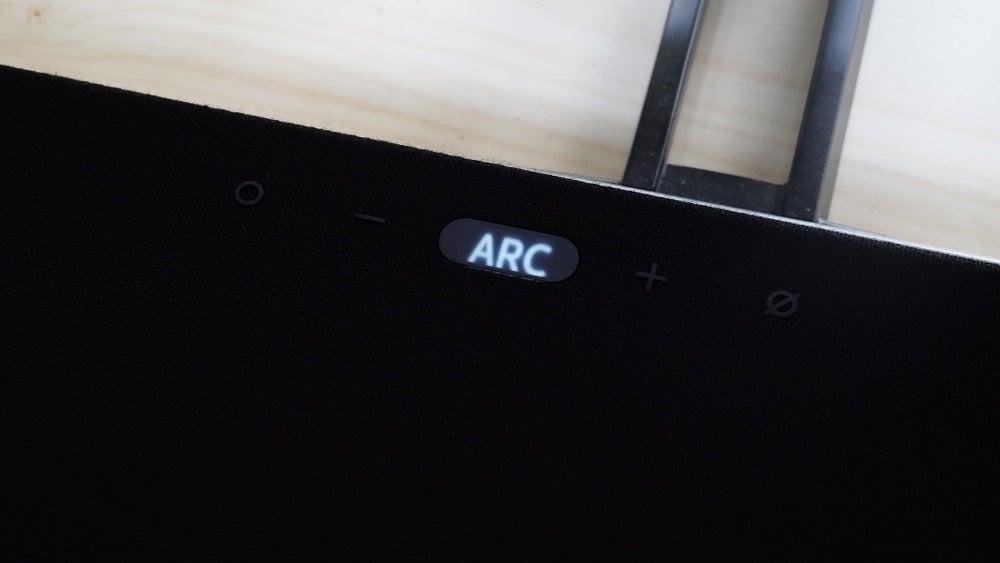
It splits the functions of the two displays so that the front-facing panel shows up LED lights for power and volume, while the screen on top reveals input source and audio format. That means you can’t see the input selected or the format that’s playing – you’ll have to walk over to the unit to find out. You can check the SmartThings app, but as I’ll come to later, it doesn’t have everything you need.
On top of the bar are physical controls including a multi-function button for input selection, power on/standby, or summoning Alexa. Volume controls are placed either side of the display and there’s a mic on/off button if you want to turn the voice assistant off.
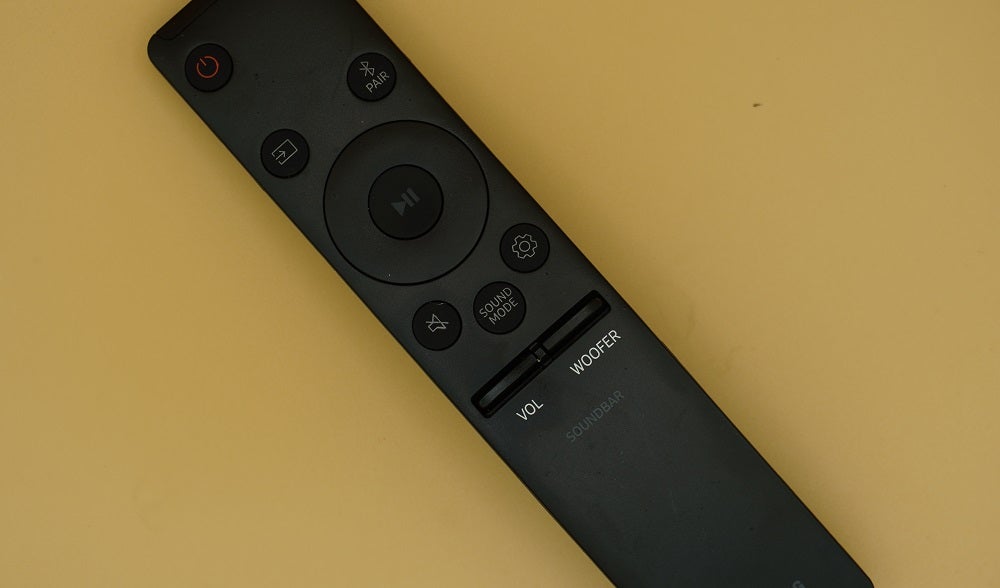
The subwoofer and surround speakers are cut from similar Kvadrat cloth, and they too are well built. The remote is pretty swish and easy to use, similar to the smart remotes that come with QLED TVs. The buttons are obviously different, but the layout is similar. There’s also a Settings button that allows you to change the the speakers’ levels, as well as tweaking bass and treble.
Samsung HW-Q50T setup – Pretty simple to put together
The Samsung HW-Q950T can be set up via the SmartThings app, which offers a swift process of getting the bar up and running. In the app you’ll have access to features including EQ settings and woofer levels, Alexa voice integration among others. However, you can’t change the soundbar’s various speaker levels through the app, and that means having to get up from your seat to deal with the display.
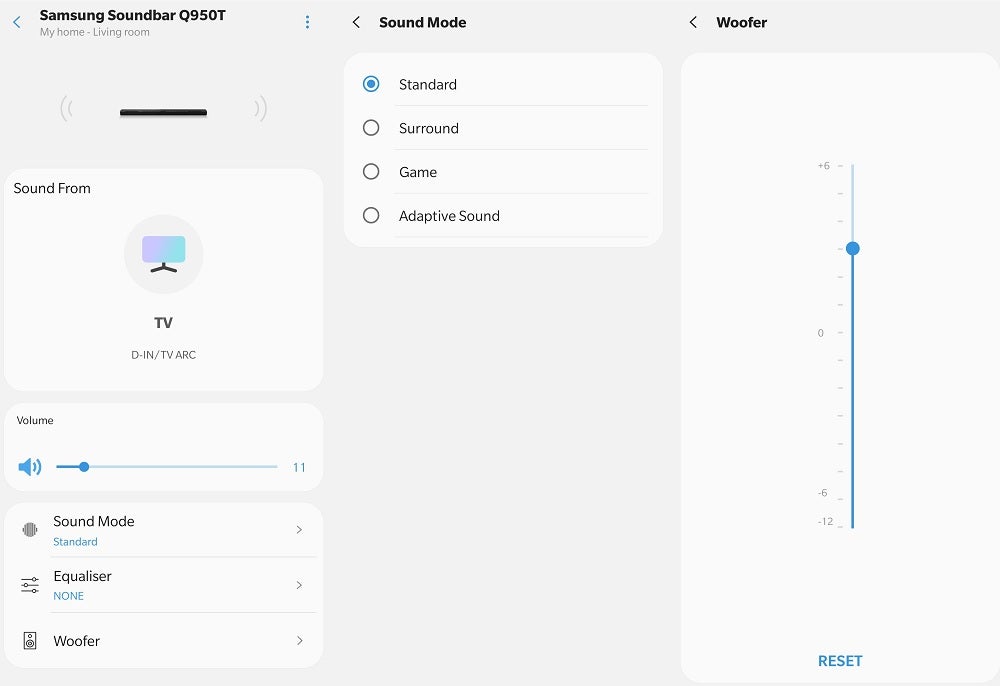
For what it does, SmartThings is easy to use, and it allows for integration with other smart products for control over a home system. Unlike Sonos’ Trueplay feature, the app doesn’t provide any means of auto-calibration for the room.
In terms of positioning (according to Samsung’s diagrams), the sub should be placed near the main unit. Of course, the rear speakers are positioned behind you, and Samsung recommends placing them at 135 degrees or 150 degrees to your seating position. One thing to note is that the surround speakers require plugging into the mains, so you may (like I did) need a mains extension for this.
Samsung Q950T features – Includes HDMI inputs for external sources
The Samsung HW-Q950T is compliant with Dolby Atmos and DTS:X soundtracks, delivered via Dolby TrueHD and DTS Master Audio respectively. There’s also support for legacy formats such as Dolby Digital and DTS.
Enclosed in the HW-Q950T system are a mind-boggling 20 speakers with a power output of 546W. That’s less than the claimed wattage of the LG SN11RG’s 770W (a 7.1.4 setup). It could indicate a shortfall in power, but there’s a case to be made in the vein that it’s what you do with it that matters.
Related: Best Dolby Atmos soundbar
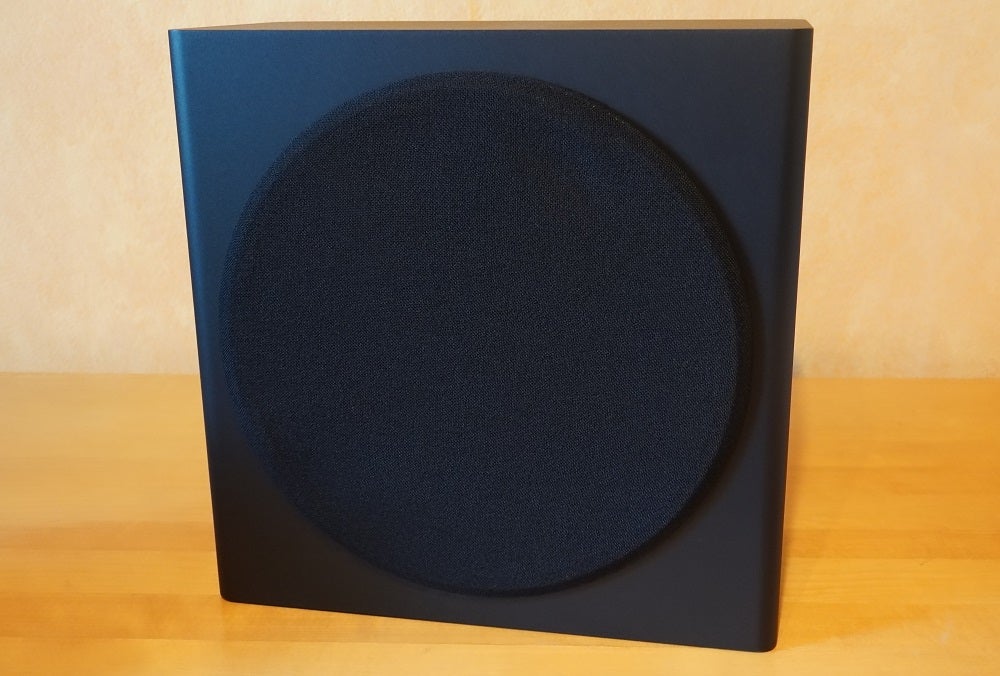
Of that power, 160W is supplied to the wireless subwoofer with 140W sent to the rears. The main unit features two upfiring full-range drivers, full-range side-firing speakers, a wide-range tweeter and dedicated centre. The surround speakers also incorporate upfiring units for the 9.1.4 designation.
Audio formats cover lossy to lossless in AAC, MP3, OGG, WAV, FLAC, ALAC and AIFF. Connections tally at a HDMI eARC/ARC to a TV, plus two HDMI inputs for plugging external sources such as a Blu-ray player or games console. It’s nice to have two inputs, considering most brands aside from Canton can be rather stingy – I’m looking at you, Sonos. Those connections are complemented by an Optical input (the USB is for service use). You can find the connections in a recessed area on the speaker’s underside.
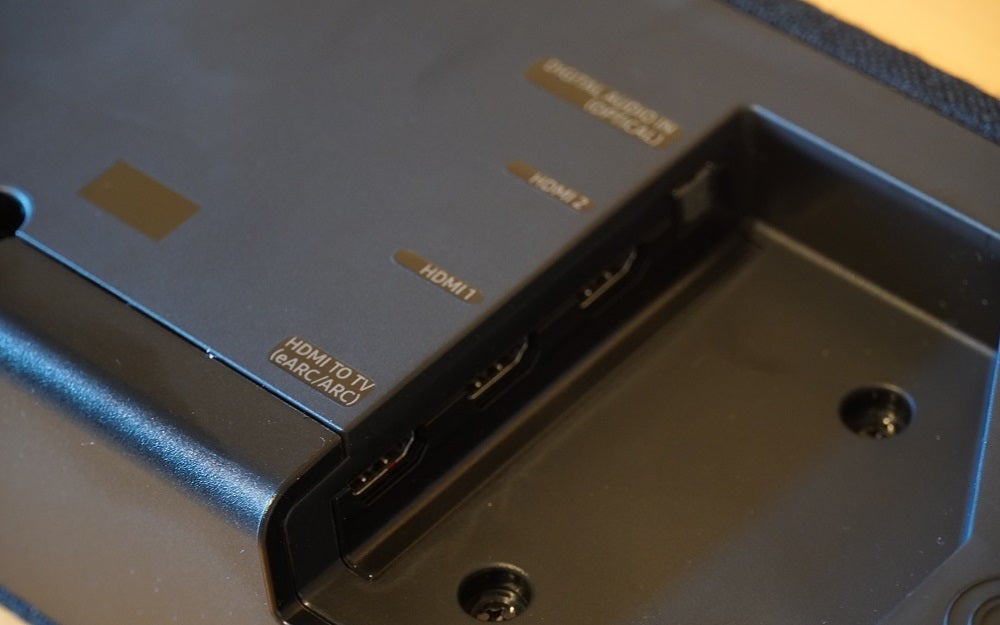
I did experience HDMI handshake issues, with the offender appearing to be the Panasonic DP-UB820 4K player. Disconnecting the player, restarting the TV and soundbar before re-connecting seemed to do the trick, but issues of this sort remain irritating nonetheless.
Sound modes include Standard, Surround, Game Pro and Adaptive Sound. Standard is probably the one that will be used most, but it offers the flattest delivery. Surround beefs it up and engages the rears, while Game Pro claims to offer a more immersive gaming experience. Adaptive Sound analyses content and refines audio on a scene-by-scene basis. In this mode vocal clarity receives a boost, and Adaptive Sound is usually the mode entered into when Samsung’s Q-Symphony is engaged.
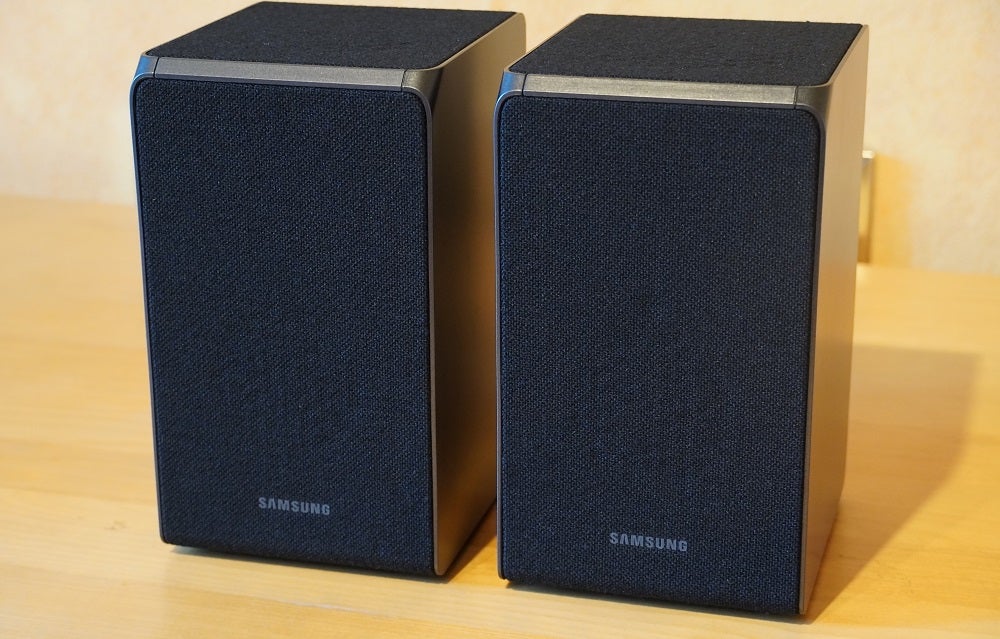
Speaking of: Q-Symphony combines a compatible QLED TV’s Object Tracking Sound with a supported soundbar. It synchronises audio from the TV and soundbar for a bigger and taller sound field that can track objects as they move across the screen. In short, it works.
The Samsung HW-Q950T can pass through 4K HDR10+ content (no mention of Dolby Vision or HDR10). Other features include Bluetooth (SBC), built-in Alexa and Spotify Connect integration. Those with a compatible Samsung Galaxy smartphone can send music to the soundbar without manually pairing by tapping it on the bar’s top surface. There’s no support for IMAX Enhanced content, NFC pairing or Samsung’s Bixby voice assistant.
Samsung HW-Q950T performance – A stunning immersive surround sound
The Samsung HW-Q950T puts the pedal to the floor and guns it with a wonderfully immersive surround sound performance. Vocal clarity is crystal clear, with the dedicated centre ensuring dialogue is unhindered, even in the busiest of soundtracks. Even dialogue offloaded to the side or the heights is clearly audible.
“Normal” content works, too, from sports to daytime programmes. The soundbar’s natural-sounding, fastidious and uncoloured approach leaves you focusing on what’s being said or happening. There’s no apparent harshness: just a very refined and clean delivery, with dialogue given enough elevation that it comes from the mouths of those talking on-screen.
Related: Best TV
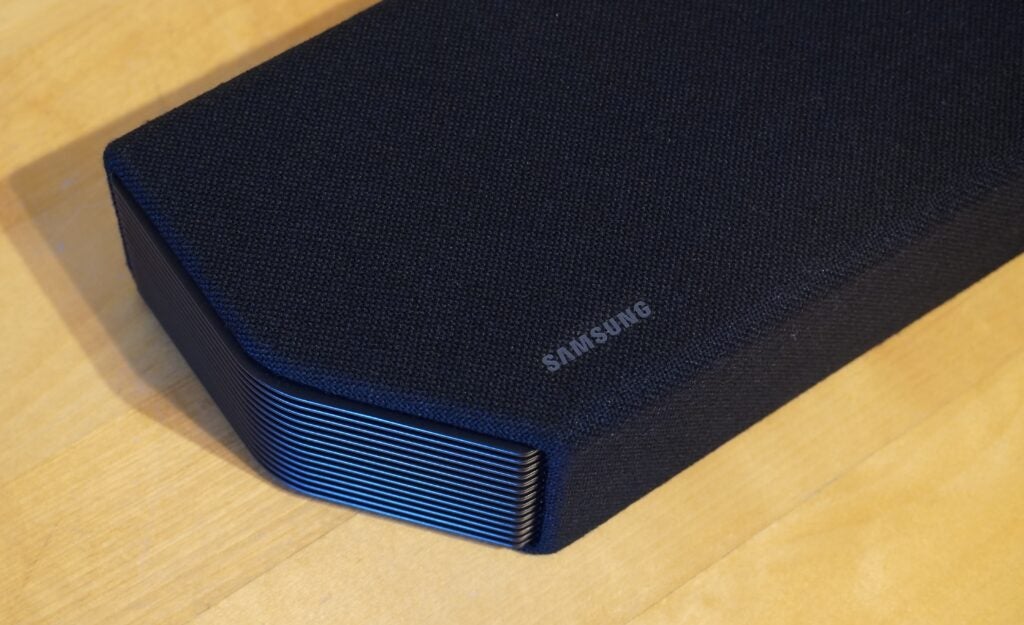
It isn’t a system that needs much of an invitation to go loud. Despite outputting 200W less than the LG SN11RG – the Samsung Q950T supplies no shortage of fire and fury. The “demolition” of the Old Bailey in V for Vendetta is well and truly explosive, the LFE performance provided by the sub’s 8-inch driver is satisfyingly big, meaty and rumbly in its description. This system could fill a large room, and there were several occasions I worried that I was disturbing the neighbours, even with the volume at level 15.
Just to further cement the system’s low-end performance, the opening of Blade Runner 2049 is afforded huge scale that reverberates around the room. Bass notes have depth and are free from the distortion that can afflict less capable subs. Given 2049 is one of the more dynamic and thunderous sound mixes of recent years, that’s no mean feat.
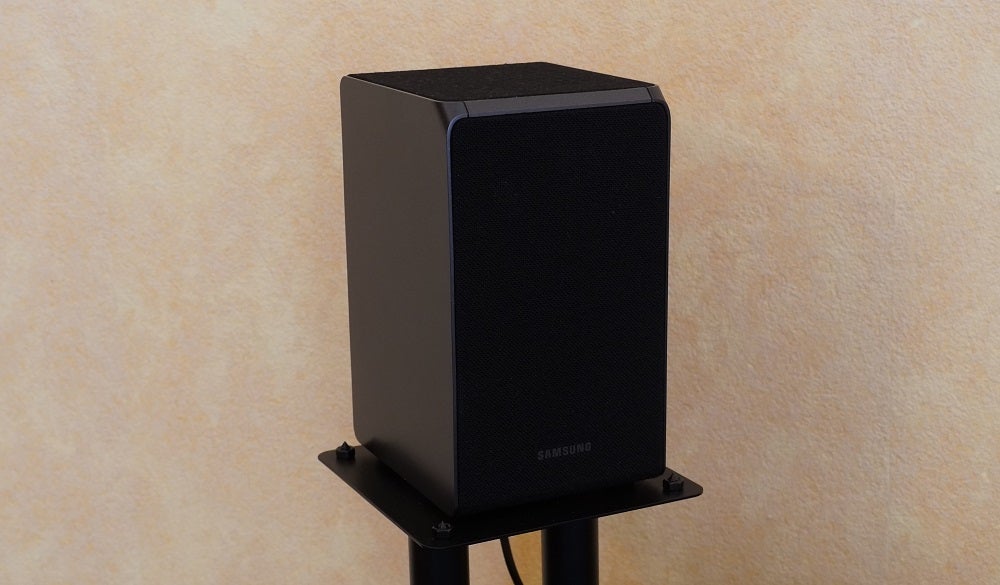
If there’s one slight issue I noted, it’s that the clang of the piano as K and Sapper Morton fall to the ground is dulled, perhaps a little suffused by the power of the bass. You can of course tweak the sound levels in the EQ settings to further refine the audio to your liking.
Despite all the sound and fury, this soundbar is just as adept with quieter scenes and moments. Detail levels are high and it creates an excellent soundscape to listen to. Jyn and Cassian’s sleuthing around Jedha in Rogue One engages both the rears and the fronts to create a sense of place. The various sounds of people and activity helps create a believable sense of hustle and bustle, opening up that film’s excellent sound design.
Related: What is Dolby Atmos?
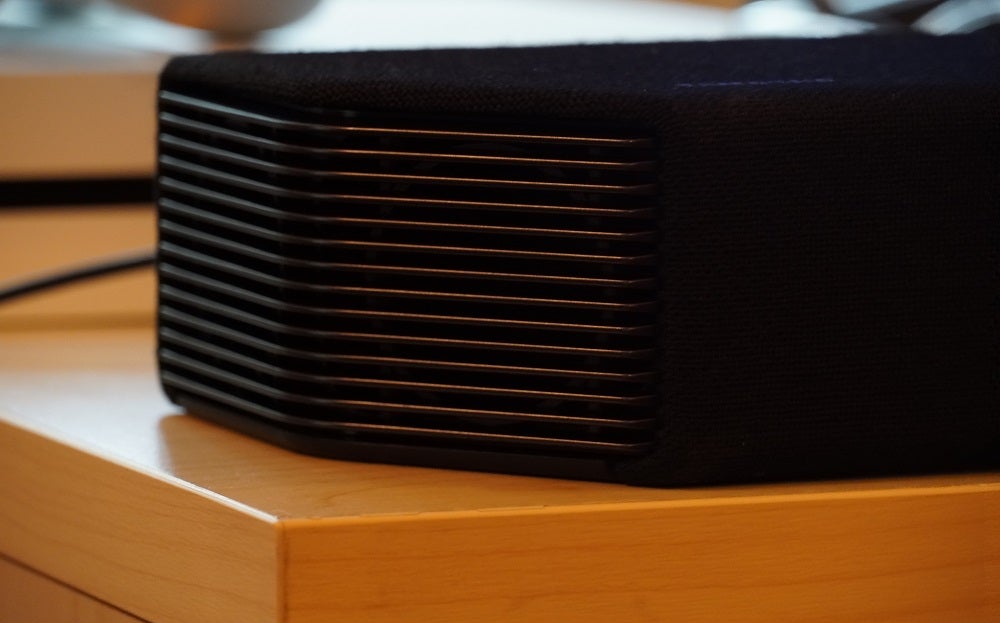
The bar’s sense of dynamism is excellent, too. Loud sounds are definably potent, while quiet moments are handled with subtlety and control. When the HW-Q950T ramps up its sound, it’s impactful – at times, visceral – and delivered with clarity. The deer that Daniel Kaluuya’s Chris and Allison Williams’ Rose hit on the way to Armitage house still elicited a shock, the sound design lulling me into a false sense of calm before the Q950T brought the scene to life.
Get Out’s DTS:X soundtrack is aided and abetted by the Samsung Q950T’s ability to place effects. The Swahili voices in the opening credits surround the viewer with creepy effect, while off-screen cues – such as the moans of the deer crying after the hit – help to create an expansive soundscape.
That’s in part due to the wide and side-firing speakers, which do an impressive job of creating the appearance of phantom left and right front speakers. Streaming The Aeronauts on Prime Video reveals unexpected benefits in the scene where a balloon is being built for an expedition, with the rat-a-tat-tat sound of sewing machines expelled to the side to produce width.
Related: What is DTS:X?
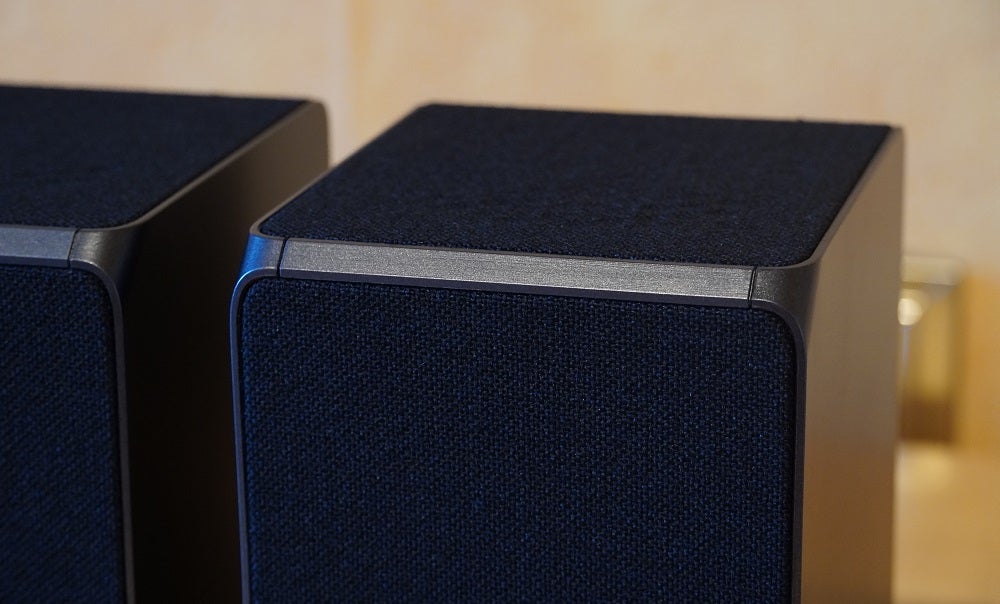
The opening of the original Blade Runner has the attributes previously mentioned, but also makes clear how impressive the system’s steering of effects is. Spinners (flying cars if you aren’t familiar) pan seamlessly across the soundstage from the front to rears with real weight, impact and definition. And the hand-off to the rears provides the sense that something big has actually zoomed past.
For Atmos/DTS:X, the presence of overhead channels are the whole point of the experience, and Samsung Q950T aces this part of its assignment; whether it’s the rock ceiling caving in as the rebels escape from Jedha, King Kong racing after Parzival/Wade’s Delorean in Ready Player One, K’s Spinner landing at Morton’s farm in 2049, or instruments hanging the air in the Black Eyes song that opens A Star is Born. It’s a wonderfully broad, articulate and tall sound field to find yourself in.
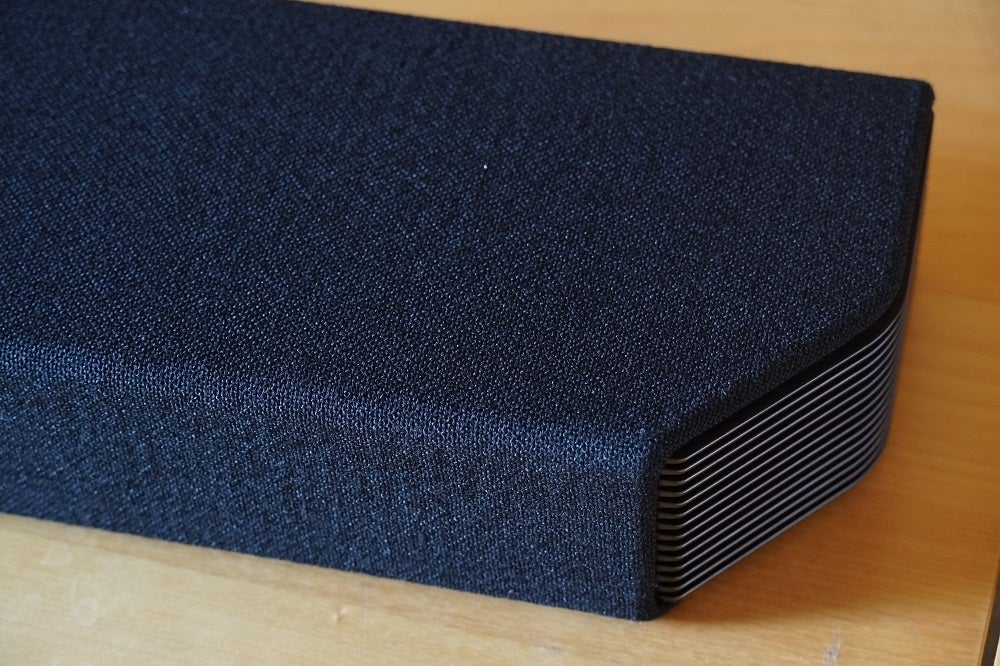
Samsung has made claims about the soundbar’s Game Pro mode offering an elevated, immersive gaming experience, but this isn’t the impression I get. With the games I played – Horizon: Zero Dawn, Project Cars 3 and Gears 5 – the experience was front-heavy, with the rears filling in the spaces behind. I don’t believe there’s as much of a competitive advantage as has been claimed, especially with a fast-twitch multiplayer game such as CoD: Warfare.
To add to the soundbar’s impressive performance, music sounds great both in films and streaming. The performances in A Star is Born sound natural and spacious, pulsing with energy that captures the near-live approach. Streaming from Tidal and it’s a clean and balanced delivery, laced with detail and analytical in its approach.
Like Game mode, there’s a front-heavy aspect to music, and despite the HW-Q950T’s talents, not every track is suited to it. Gladys Knight’s Heard It On The Grapevine sounds good, but it feels better suited to a simpler stereo setup.
Related: Best Gaming TV
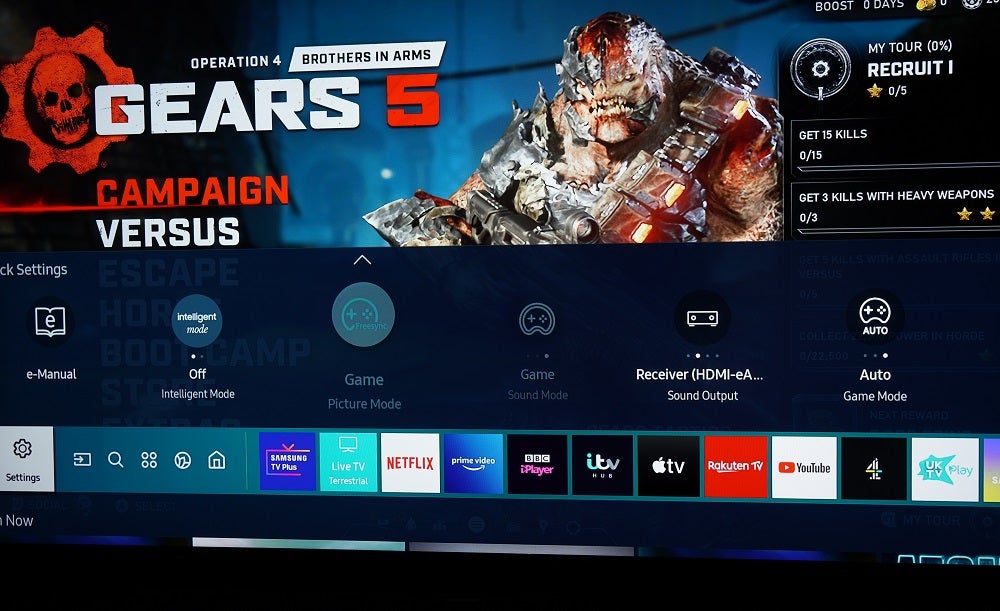
Should you buy the Samsung HW-Q950T?
The Samsung HW-Q950T’s performance is wonderfully immersive with Atmos and DTS:X object-based audio, as well as delivering excellent fidelity with music and a surround soundscape for games. It’s expensive, but quality products often are. If you’re not interested, or simply don’t have the space for a traditional surround speaker package, then the HW-Q950T is a convenient alternative.
It’s also worth taking into account that Samsung’s recent Q-series soundbars are designed to integrate with newer QLED TVs, whether that’s for design, features or sound. That may be worth bearing in mind when looking for an audio partner for your TV.
The most obvious rival is LG’s SN11RG wireless surround sound system. It’s a 7.1.4-channel system compared to Samsung’s 9.1.4 setup, and while it comparatively offers more power, the subwoofer isn’t as finessed in its output and impact sounds can be somewhat tame in how they’re delivered. Considering there’s not much difference in price, Samsung would get our vote.
The post Samsung HW-Q950T appeared first on Trusted Reviews.
Source Trusted Reviews ,Home Appliances Reviews

No comments